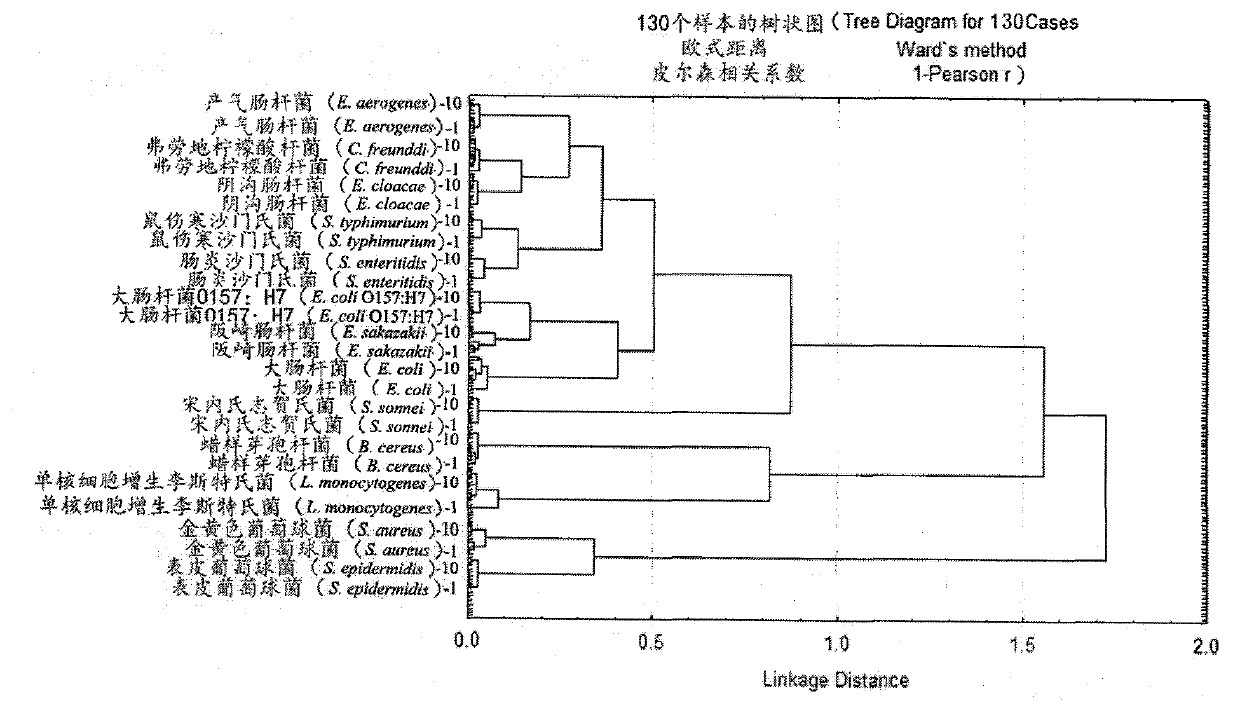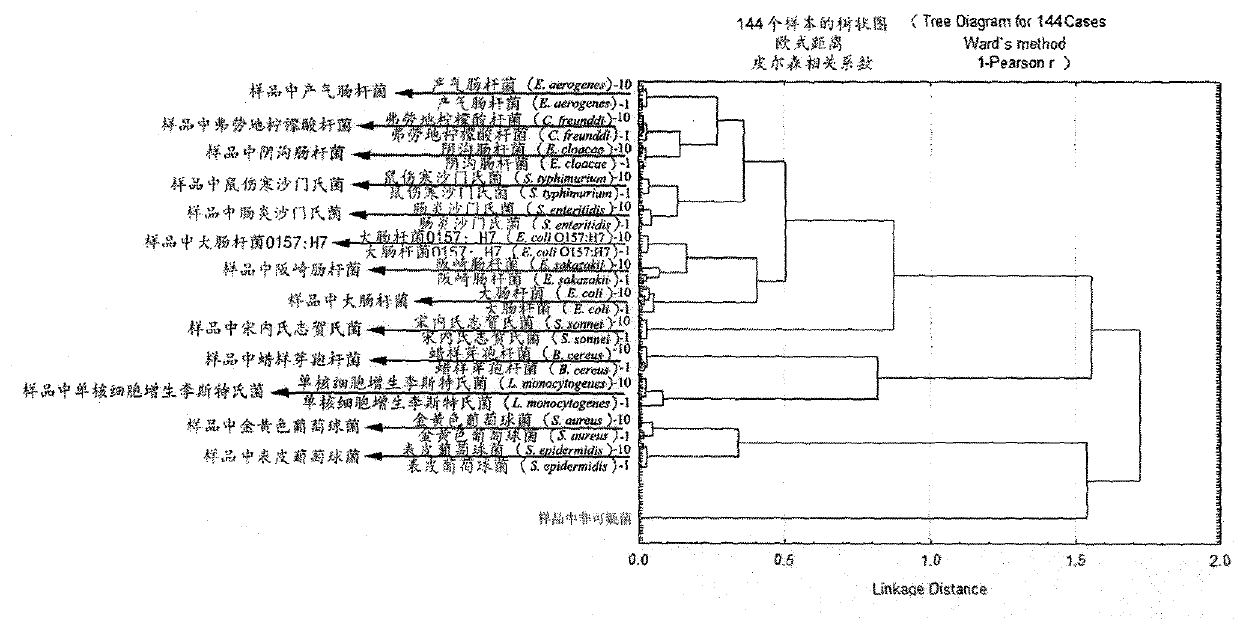Classification and identification upon 13 pathogenic bacteria by using Fourier transform infrared spectroscopic technology
A technology of Escherichia coli and O157 is applied in the field of classification and identification of 13 pathogenic bacteria by Fourier transform infrared spectroscopy, which can solve the problem that the FT-IT spectral information sharing database of pathogenic bacteria is open, not standardized enough, and the spectral technology is not systematic and mature enough. And other issues
- Summary
- Abstract
- Description
- Claims
- Application Information
AI Technical Summary
Problems solved by technology
Method used
Image
Examples
Embodiment
[0021] Preparation of the test sample: Divide the thawed frozen mackerel into 13 portions, 500g each, cut them into pieces and homogenize them, and add 5×10 2 CFU / mLB.cereus ATCC12826, E.coli O157:H7ATCC43895, S.aureus ATCC12600, S.epidermidisATCC I2228, E.coli ATCC10536, E.sakazakii ATCC51329, S.sonnei ATCC25931, L.monocytogenes ATCC7.S1freundi ATCC19114, .typhimurium ATCC14028, E.aerogenes ATCC49701, E.cloacae ATCC13047, S.enteritidis CICC21482 standard strain solution 10mL each, stir and mix well, freeze for later use.
[0022] Test the samples for testing as follows:
[0023] Including purified water, 0.9% normal saline, absolute ethanol, nutrient broth, culture medium for 13 kinds of bacteria enrichment and selective medium plate (refer to the detection standard of corresponding bacteria), etc.;
PUM
 Login to View More
Login to View More Abstract
Description
Claims
Application Information
 Login to View More
Login to View More - R&D
- Intellectual Property
- Life Sciences
- Materials
- Tech Scout
- Unparalleled Data Quality
- Higher Quality Content
- 60% Fewer Hallucinations
Browse by: Latest US Patents, China's latest patents, Technical Efficacy Thesaurus, Application Domain, Technology Topic, Popular Technical Reports.
© 2025 PatSnap. All rights reserved.Legal|Privacy policy|Modern Slavery Act Transparency Statement|Sitemap|About US| Contact US: help@patsnap.com


